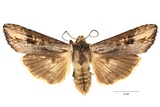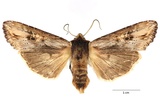Xylena exsoleta (Linnaeus, 1758) Species
Last modified: Dec. 11, 2024, 11:54 a.m.
This species has not been seen in Belgium for a very long time. Presumably extinct.
This species is considered Regionally Extinct according to the IUCN Red List category for Flanders 2023.
Details
- Classification
- Family: Noctuidae > Subfamily: Xyleninae > Tribus: Xylenini > Genus: Xylena > Subgenus: Xylena > Species: Xylena exsoleta
- Vernacular names
- Roetvlek (NL), Sword-grass (EN), Le Bois-sec (FR), Graue Moderholzeule (DE)
- First mention in Belgium
- De Sélys-Longchamps E. 1844. Énumération des insectes Lépidoptères de la Belgique. — Mémoires de la Société royale des Sciences de Liége 2: 1–35. On page 13.
- Status
-
Native
Distribution
Bionomics
The moths developed in the pupa and then rested until September, when the adult emerged after the onset of cooler weather.
The species would be attracted to the pheromone of Acrolepiopsis assectella.
Flight periods
They fly from September onwards, then they hibernate for the winter and reappear in March or April till May.
Observed on
- Substrates:
- Deciduous trees, Shrubs, Herbaceous plants and Grasses
The larvae are polyphagous, but feed often on Fabaceae, but also on other plants like Rumex , Helianthemum etc...
Habitat
It inhabits grasslands, fringes, dry warm ruderal terrain, fallow land and embankments.


